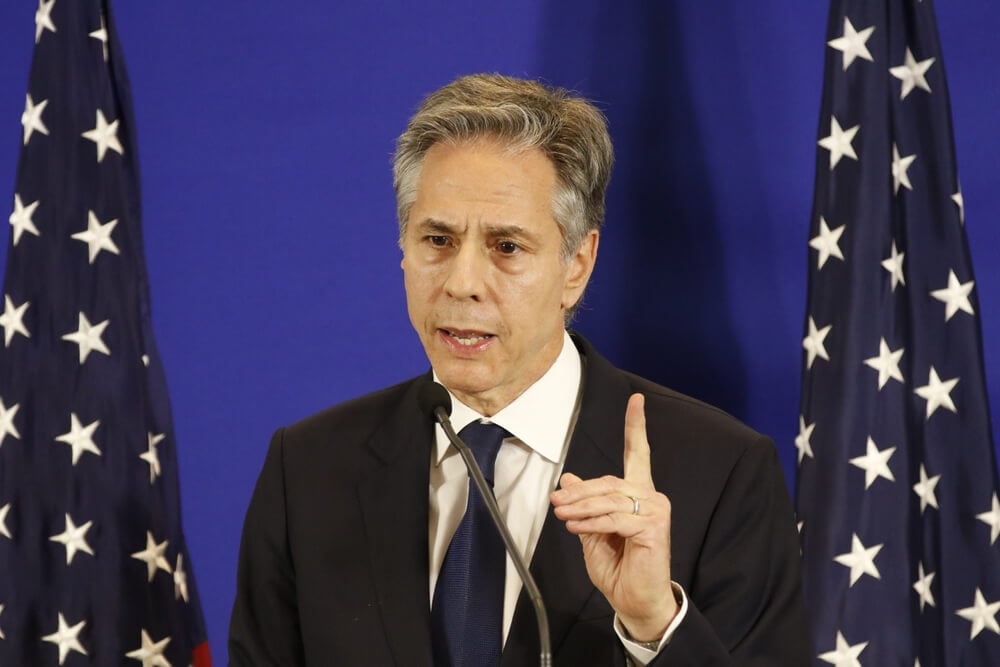It may be premature to speak of an African Spring but this has not stopped security agencies in Uganda and Nigeria keeping a close eye on mass youth demonstrations now into their second month in Kenya.
The Arab Spring anti-government uprisings that began in 2010 in North Africa and spread from Tunisia to Syria were also against corruption and cronyism. They concluded in an Arab Winter as regimes responded with violence to consolidate their power.
Gen Z protesters in sub-Saharan Africa have yet to be quashed although more than 50 people have been killed in Kenya, 104 protesters arrested in Uganda, and the Nigerian military has warned against planned protests, raising fears of a violent crackdown.
To further stretch the Arab Spring analogy, the US appears to have been caught by surprise by the unrest in Kenya where it has been closely courting President William Ruto as a security ally, much as it did former Egyptian President Hosni Mubarak before the uprising.
The warmth towards Ruto came despite the African leader’s indictment by the International Criminal Court over his role in violence in which more than 1,200 people were killed during Kenya’s 2007 elections.
Short-term advances
In Africa, the US appears to have prioritised short-term advances for strategic advantage while failing to anticipate the growing anger of ordinary people as it did in the Middle East.
Ruto was hosted by US President Joe Biden at a White House gala dinner in May during the first state visit by an African leader to the US in 16 years. This was after Kenya hosted US Africa Command’s largest military exercise in East Africa. Biden has also designated Kenya as a “major non-NATO ally.”
Several hundred Kenyan police officers have joined a US and UN-backed mission to quell armed gangs and bring stability to Haiti. Their arrival in Port-au-Prince on 25 June was hailed by US Secretary of State Antony Blinken, who said on X that “we commend Kenya for leading this mission”.
Gen Zs, those born between 1997 and 2012, are angry about corruption and cronyism
On the same day, Kenyan police fired tear gas and live rounds at demonstrators who breached the parliament building during protests against a bill to raise taxes, killing at least five people.
The Arab Spring was sparked by the self-immolation of a street vendor in Tunisia because of desperation and frustration with authorities. In Kenya, Gen Zs, those born between 1997 and 2012, are also angry about corruption and cronyism, such as the funds dedicated for use by the spouses of the president and deputy president.
Ruto has returned a finance bill to parliament for amendments and fired cabinet ministers. He also said he would consider a ban on harambees - public fundraisers used by politicians to make large cash donations to causes that often benefit themselves.
The debt crisis
Kenya’s young people are unappeased and have vowed to continue their protests each Tuesday and Thursday.
Human Rights Watch and Kenyan protestors have called on the IMF to work with the government to ensure that IMF support for the country is aligned with human rights and anti-corruption efforts.
The IMF has committed $4.4 billion to Kenya in return for steep spending cuts. Kenya’s national debt is around $80 billion, or about three quarters of its annual economic output, and 65% of annual revenue goes to repaying the debt.
“international financial institutions should show more generosity in tackling the debt crisis faced by many African countries" - International Crisis Group
“The widespread outrage sparked by proposed taxes on goods like sanitary pads and cooking oil in a country where corporate tax evasion is endemic should be a wake-up call to the Kenyan government and the IMF that they cannot sacrifice rights in the name of economic recovery,” said Sarah Saadoun, senior researcher on poverty and inequality at Human Rights Watch.
To avert further instability, groups such as the International Crisis Group say “international financial institutions should show more generosity in tackling the debt crisis faced by many African countries.
International institutions had been silent about the protests
The protests in Kenya partly inspired youth-led protests in Uganda that were also mobilised online to demand an end to corruption and a reduction in the salaries of Ugandan parliamentarians, which are among the highest-paid in the world. Ugandan forces cracked down with force and arrests.
In Nigeria, social media is the channel for calls to protest against President Bola Tinubu with the hashtag #EndBadGovernance. Nigerian officials said the protests planned for 1 August would create the conditions for “regime change” and incite chaos.
 In a call with William Ruto, Antony Blinken “commended” the Kenyan leader’s commitment to direct police to refrain from using violence of any kind against protestors
In a call with William Ruto, Antony Blinken “commended” the Kenyan leader’s commitment to direct police to refrain from using violence of any kind against protestors
The Africa Confidential newsletter said it had seen an internal Nigerian police memo encouraging officers to infiltrate the protestors, suggesting a crackdown like that seen in Kenya and Uganda.
It also noted that international institutions, such as the IMF and World Bank that have supported the policies of the Kenyan and Nigerian leaders, had been silent about the protests.
US disquiet about the behaviour of its African allies is tempered with the knowledge that new ruling juntas in the Sahel region have rejected Western forces and signed security agreements with Russia. China’s investment and influence across Africa is another source of concern.
In a call with Ruto on 25 July, Blinken “commended” the Kenyan leader’s commitment to direct police to refrain from using violence of any kind against protestors. But it remained to be seen if progress, not violence, would prevail.
“Kenya is the latest country in the continent to have encountered large-scale fallout from the economic pain rippling through the continent.,” said the an International Crisis Group commentary. “It is unlikely to be the last.”